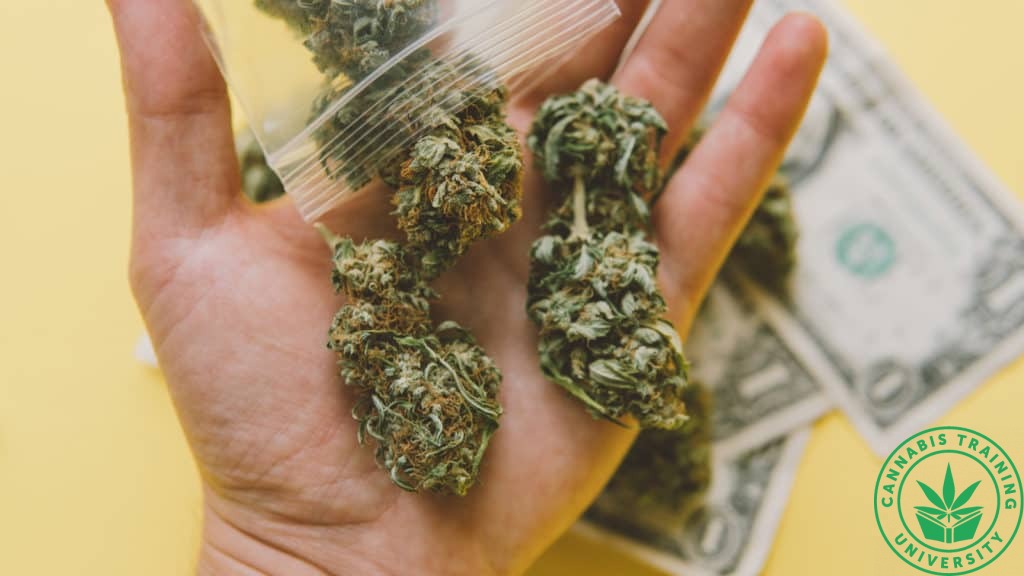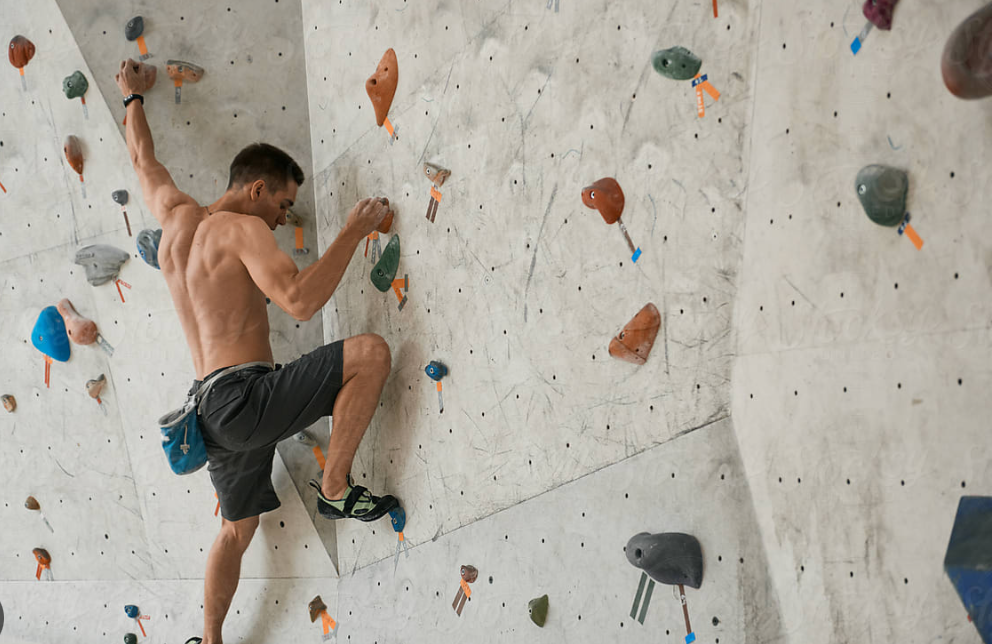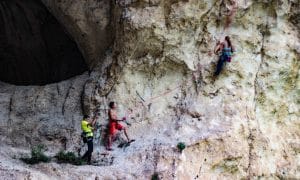Training
Free Dispensary Certification Online
Published
2 years agoon
By
admin

Get hired as a budtender with free dispensary certification online. You see some ads for that sometimes.
Unfortunately free is usually a sign something has no value. And that is the case with free budtender and dispensary training course claims.
Dispensary Certification Online
For actual dispensary certification courses online there are programs that are not free, and are still affordable, and provide actual value for those looking to work in a dispensary.
Cannabis Training University is the leader in cannabis education and has trained over 60,000 students for cannabis jobs and dispensary careers.
Budtender Requirements and Duties
A budtender is a specialist in the selling of cannabis goods as well as in educating customers and responding to their inquiries. They advise customers on the many cannabis strains that are available and act as educated authorities in the marijuana market.
They frequently work in a dispensary, although they may also work for delivery services, producers, or other cannabis-related companies. Budtenders need to be aware of marijuana’s legal recreational uses as well as its medical applications.
To succeed in this role, prospective Budtenders should have excellent communication skills, in-depth knowledge of various marijuana strains, cannabis-derived edible goods, and tinctures/topicals infused with therapeutic cannabinoids.
They also need to be knowledgeable about the cultivation and processing of these items, from seed to store shelves. It is essential to have a passion for providing excellent customer service as well as an understanding that every customer has different demands and wants.
The main responsibilities of a budtender are to provide excellent customer service by answering questions about various marijuana strains and other marijuana products, recommending particular varieties based on a customer’s needs, explaining the effects and benefits of various marijuana varieties, packaging up orders for customers, creating labels for packages, updating inventory data, properly discarding of expired product, and reporting any problems with customers or vendors to management.
Want a budtender certification? Looking for a way to work in a dispensary?
How To Get a Budtender Job In a Dispensary
Potential Budtenders must not only be knowledgeable about marijuana, but also have competency with computers, including data entry, and a general understanding of POS systems (Point Of Sale).
Other requirements could be knowing the laws governing safe handling procedures for edibles/medical products made from cannabis or being older than 21 (depending on local legislation), as alcohol is occasionally sold alongside marijuana.
Depending on the job, further training can be necessary, such as passing a background investigation on potential employees or acquiring a specialized license from a state agency like the Department of Health and Human Services (DHHS).
Last but not least, as many people still refer to marijuana when buying it by its street names, being conversant with slang terms for it might help guarantee that clients get what they need.
Dispensary Management Duties and Career Outlook
An increasingly common way to buy cannabis products is via dispensaries. The administration of a dispensary necessitates a thorough knowledge of the rules and legislation that regulate the sector as well as a comprehension of the daily tasks necessary for efficient operations.
We will talk about dispensary ownership, legal requirements, financial factors, and daily operations in this paper.
FREE E-BOOK
Get our top rated STRAIN GUIDE!
Dispensary Ownership
A dispensary can be purchased in a number of different ways. Depending on local rules and regulations, it can entail setting up an individual proprietorship, a business partnership, or a limited liability corporation (LLC).
It’s critical for prospective owners to be aware that certain localities may have limits on who is permitted to own dispensaries. In some states, owners must also have resided there for at least a year before they may apply for a license.
It’s also crucial to remember that most states demand that all parties with a stake in the company entity be disclosed at the time of application. Want to open a dispensary?
Dispensary License Conditions
State-to-state variations in the licensing procedure may occur, but in general it entails filling out a number of forms, making various license-related payments, and receiving any necessary permissions, such as those for growing or testing facilities.
Potential owners should conduct their due diligence before applying so they are aware of the applications that must be submitted and any additional conditions, such as background checks for all individuals involved.
Additionally, many states mandate security precautions including video surveillance systems and secured product storage.
Dispensary Expense Costs
The start-up costs of opening a dispensary include rent or purchase of retail space, insurance premiums related to product liability issues, security installation costs such as cameras and locksmith services, inventory costs such as supplies needed for product packaging, as well as employee wages that must adhere to minimum wage requirements in each state where you operate.
When planning start-up costs of a dispensary, advertising costs should also be included because they are likely to change based on when promotions are scheduled throughout the year.
Dispensary Day-to-Day Activities
The use of billboards or print media advertisements to advertise a dispensary’s business entity and product offerings within their area of operation is crucial for maintaining compliance with local regulations regarding product labeling requirements (which can vary depending on location).
This is especially true if the advertisements use slang terms related to cannabis.
In order to ensure compliance with all applicable laws regarding taxation matters specific to either medical marijuana use or recreational use depending on where your dispensary operates from, dispensaries must also keep accurate records pertaining to outbound sales information that must match up correctly when audited by local authorities (as this can also vary widely between different locations).
“
There are over 300,000 jobs in the cannabis industry. CTU trained me for one of them!
– Johanna Rose
Makes $24.50 @ THC +
Dispensary Training Online
Looking for dispensary training online? Want to learn how to open a dispensary from an accredited cannabis college? Check out the CTU dispensary management certification program and learn how to open a dispensary today!
How much does it cost to open a dispensary in Florida?
To open a medical marijuana dispensary, applicants must be registered with the Department of Health’s Medical Marijuana Use Registry. In addition, they must submit an application to the Florida Division of Medical Quality Assurance (MQA). The cost for this application is $6250, which is non-refundable regardless of whether or not the application is approved. Furthermore, applicants must also provide proof of financial responsibility for up to $5 million in damages to cover potential liabilities.
How much does it cost to open a dispensary in Colorado?
Opening a dispensary in the state of Colorado requires careful planning and a significant financial investment. Depending on location, type of business, and the complexity of operations, the cost to open a dispensary in Colorado can range from $150,000 to more than $1 million.
When opening a dispensary in Colorado, there are certain compliance costs that must be taken into consideration.
First and foremost is obtaining an Occupational License which requires an application fee ranging from $2,500 to $10,000. Additionally, an applicant must have met all local requirements such as zoning ordinances and permits before applying for the license. Other licensing fees include:
• Cultivation License fee – $6,000
• Dispensary License fee – $2,000
• Retail Storefront Licensing Fee –$3,750
• Manufacturing Facility Licensing Fee – $15,000
• Processor/Manufacturer Licensing Fee -$20,000
• Testing Laboratory Licensing Fee –$5,250
• Transporter Vehicle Permit Fee –$750
• MIP (Marijuana Infused Product) Manufacturer Licensing Fee –$30,000
How much does it cost to open a dispensary in Missouri?
Opening a dispensary in Missouri can be an expensive endeavor. The application fee for a dispensary license is $6,000, and that amount must be paid when the application is filed with the Department of Health and Senior Services. Additionally, applicants must pay a non-refundable annual licensing fee of $10,000 each year after their initial application is approved. Every dispensary must also have a qualified patient or caregiver present at all times during operating hours and maintain a minimum capitalization of $100,000 in its operating account. Furthermore, dispensaries are limited to two physical locations for any one entity, meaning that additional fees may apply if more than one location is necessary.
How much does it cost to open a dispensary in Illinois?
pening a dispensary in Illinois can be a costly endeavor. Depending on the size and type of dispensary, the cost of permits, taxes, and initial setup may range from tens of thousands to upwards of a million dollars. In addition to the cost of setting up shop, there are additional fees for applying for federal and state licenses, which include inspection fees, background checks, and other administrative costs. Furthermore, depending on the specific location of the dispensary, local zoning regulations may add to the total cost.
You may like
Training
How to Open a Dispensary in Massachusetts
Published
2 months agoon
January 6, 2025By
admin
Massachusetts paved the way for the East Coast’s recreational market when it became the first state in the region to open the doors for adult-use shops.
Now, it’s your turn to provide high-quality service and products to customers in need.
Opening a Cannabis Dispensary in Massachusetts
If you’re planning on opening a dispensary in Massachusetts, it’s important to understand the laws and regulations of your state, county, and city to remain compliant. Get to know both the medical and recreational retail side of the law.
Next, you’ll need to develop a business and operations plan for your retail establishment. With a solid business plan in hand, you can obtain financing from investors to meet the high startup costs of opening a dispensary.
After determining the corporate structure of your business and your business partners, you’re ready to apply for the right type of dispensary license and registration.
Complete the application for the proper license on the Cannabis Control Commission’s (CCC) website and pay the associated license and background check fees. You’ll need to set up and account first.
Now, it’s time for the fun part. Choose your facility location while remaining compliant with state and local laws. Hire a staff of budtenders, security personnel, managers, and supporting staff.
Build relationships with cultivators and manufacturers to find the best products available for your customers.
Of course, the process is more complex than the considerations listed above, but it’s a general overview of what you can expect when opening a dispensary in The Bay State.
Cannabis Dispensary Restrictions
Cannabis dispensary restrictions vary by state and local law. In Massachusetts, no person can obtain more than three marijuana treatment center or marijuana retailer licenses.
There is no residency requirement, but only a domestic entity registered to do business in the state can apply to become a registered marijuana dispensary.
Completing the Application to Open a Dispensary in Massachusetts

Prospective dispensary applicants can head on over to the CCC’s website to apply for a dispensary license. If no licenses are available, sign up for the email notice list to be the first one to receive announcements from the CCC.
To begin, create an account to enter the Massachusetts Cannabis Industry Portal (MASSCIP). Once you’re in, you will scroll down until you find the option to “Apply for a Marijuana Establishment License.” Click on “View More.”
Scroll down on the page until you find the option to “Apply for a Marijuana Retailer License.” Click “Start Application.”
All cannabis businesses must complete all three sections of the application:
- Application of Intent
- Background Check
- Management and Operations Profile
MTCs, in particular, must include the following plans, policies, and procedures in the Management and Operations Profile section:
- Plan to provide reduced cost or free marijuana to patients with documented verified financial hardship;
- A plan to comply with delivery regulations, if applicable;
- Operational plan for the cultivation of marijuana in compliance with 935 CMR 501.120, including pesticide use; and
- A list of all products that applicant plans to produce with the following information:
- Description of types, forms, shapes, colors, and flavors of products;
- Methods of production;
- Safety plan for the manufacture and production of products in compliance with 935 CMR 501.130; and
- Sample of any unique identifying mark that will appear on the product
Marijuana retailers (adult-use) shall include a detailed description of the applicant’s proposed plan for obtaining marijuana from a licensed marijuana establishment in the Management and Operations Profile section.
Previously designated MTC priority applicants or Economic Empowerment applicants may have priority status in the application process, meaning the commission will review these applications before others.
The commission will send you a notice when your application is deemed complete. In the notice, you will find payment instructions for a background check, fingerprint instructions, and notifications that the application process will proceed. Provisional license applicants are required to pay fees within 90 days.
If you wish to apply by mail, send your completed application forms to:
Cannabis Control Commission
101 Federal Street, 13th Floor
Boston, MA 02110
Massachusetts Dispensary Fees
The following cannabis licenses must be renewed annually. Application fees, however, are paid once at the time of application.
To open a recreational dispensary in Massachusetts, here are the fees you must pay:
- Application Fee: $300
- Marijuana Retail Store License: $5,000
If you want to open a Registered Marijuana Dispensary (RMD), you’ll need to pay:
- Application Fee: $1,500
- Management and Operation Profile: $30,000
On top of the initial application fees, startup businesses in Massachusetts will need anywhere from $250,000 to $1 million including consulting fees, permits, and associated costs.
Massachusetts Cannabis College
CTU offers budding entrepreneurs with cutting-edge marijuana training. Our cannabis classes are available worldwide to anyone with internet access. Whether you live in Massachusetts, California, or any other legal state, you can learn how to open up a dispensary.
Our curriculum takes you through the basics of marijuana laws, marijuana cooking, marijuana extraction, and marijuana cultivation so you have a comprehensive overview of the industry as a whole. Knowledge is power.
Take your business prospects to the next level by completing your cannabis certification at CTU.

Fred Hernandez
Fred Hernandez is a highly accomplished and versatile writer, boasting an extensive background in the cannabis industry. With an in-depth understanding of various sectors including cultivators, processors, retailers, and brands, Fred’s expertise spans across the entire cannabis landscape. As a prominent contributor to CTU, he consistently delivers insightful articles exploring the latest developments, news, and regulations shaping the cannabis industry. Whether it’s delving into the intricacies of cannabis products, cannabis strain reviews, or providing comprehensive analyses of cannabis laws, or sharing expert insights on cannabis cultivation techniques, Fred’s wealth of knowledge positions him as an invaluable writer and educator for all cannabis-related subjects.
Training
The Cannabis College Germany – Best Weed School in Germany
Published
2 months agoon
January 2, 2025By
admin
If you’re interested in growing your cannabis hobby or career in Germany, enroll in the Cannabis College Germany.
Cannabis Training University offers students worldwide, including those in Germany, the opportunity to expand their knowledge and gain valuable experience in the cannabis industry.
Germany Cannabis University: Higher Education Abroad
As a world-recognized educational leader, Cannabis Training University offers the most affordable and comprehensive curriculum on the market.
Online Access
No need to drive through city streets or the Autobahn to get to your class. All CTU classes are offered online and based on your schedule.
Learn at home on your computer or make the most of your work commute on the bus by getting a few lessons done on your phone. It’s completely up to you. Classes are available 24/7 with an internet connection.
Flexible Schedule at The Cannabis College Germany
When you enroll in the Cannabis College Germany, you get twelve-weeks of access to the entire curriculum including thousands of pages of ebooks, hundreds of hours of video, and tons of additional resources, all assembled by experts in the industry.
The coursework is 42 hours. You can complete the course in as little as a week or take up to twelve weeks without having to worry about hard deadlines. It’s the perfect curriculum to fit into your busy schedule.
Value-Based Learning
There’s no need for scholarships when you enroll in CTU. Our affordable price point is accessible to nearly anyone who wants to learn about the industry.
Compared to other cannabis colleges, CTU’s value exceeds the industry standard. For just a small investment, you can jump-start your journey into the cannabis world.
Comprehensive Curriculum
If you’re excited to learn about the industry, CTU gives you the most comprehensive coverage of the market ranging from the plants’ cultivation to their sale.
There’s no need to choose a single subject area of focus. The Cannabis College Germany covers your country’s cannabis regulations and the rest of the world’s. Here are just a few of the topics covered in the courses:
- Cannabis cultivation
- Cannabis medicine
- Cannabis cooking
- Cannabis extraction
- Cannabis careers
- Cannabis business
Cannabis Jobs in Germany
Medical cannabis has been legal in Germany since 2017. Germany has been evolving its cannabis laws particularly in recent years, as the country moves to broader legalization and regulation of cannabis.
In 2023, Germany’s federal government announced plans to legalize recreational cannabis. The legalization framework includes regulated sale and personal possession.
In Europe, Germany is the largest cannabis market, but competition is heating up in the rest of Europe.
It’s easier than ever for patients to receive a prescription from a cannabis-friendly practitioner.
Cannabis companies in Germany are on a hiring spree. With promising prospects in the future, everyone from cultivators to processors to distributors is looking for local talent to move forward their business.
Here’s how you can put yourself in the best position to get hired in the industry:
- Enroll in Germany Cannabis College: Learn from experts in the industry about the history of cannabis, the current state of the industry, and every major area of the market including cultivation, extraction, medicine, and more.
- Build your skills: Apart from industry experience, cannabis companies are looking for candidates with previous experience in a related field. Whether it’s web programming or sales, you must have at least one year of experience to even be considered for the job.
- Build your resume and apply: Once you have the right experience and education, you can create your resume and cover letter showcasing your highest achievements and distinguished honors. Search online job boards including the European Cannabis Job Board where you’ll find a range of part-time, full-time, freelance, and internship positions.
Get Cannabis Certified
Do you want to be ready for the inevitable German recreational market? Do you want to find work in Europe’s most promising cannabis industry?
Enroll in Cannabis Training University’s Cannabis College Germany today!
Earning your certificates from CTU provides the competitive edge you need to secure a job in the cannabis industry. Even without prior experience, our classes equip you with the essential knowledge to jumpstart your career and make an immediate impact. Don’t wait for opportunities to pass you by-start pursuing your dreams today!

Fred Hernandez
Fred Hernandez is a highly accomplished and versatile writer, boasting an extensive background in the cannabis industry. With an in-depth understanding of various sectors including cultivators, processors, retailers, and brands, Fred’s expertise spans across the entire cannabis landscape. As a prominent contributor to CTU, he consistently delivers insightful articles exploring the latest developments, news, and regulations shaping the cannabis industry. Whether it’s delving into the intricacies of cannabis products, cannabis strain reviews, or providing comprehensive analyses of cannabis laws, or sharing expert insights on cannabis cultivation techniques, Fred’s wealth of knowledge positions him as an invaluable writer and educator for all cannabis-related subjects.

Bouldering and rock climbing have exploded – can cannabis help with this hot activity?
Even 5 years ago, rock climbing and bouldering were niche activities for those with a passion. But since it has become a fun, core strengthening, urban activity and is now a multi-billion dollar industry. Cities, towns and cruise ships now have climbing gyms and the popularity as soared. North American climbing gyms alone almost reached $1 billion dollars last year, this doesn’t count outdoor, equipment and other markets. With its popularity, it blends in with other lifestyle options, so here are key tips on bouldering and marijuana.
RELATED: Marijuana And Exercise, All Part Of The Healthy Cannabis Life
France is was the birthplace of modern bouldering. Pierre Allain, a pioneering French climber in the mid-20th century, loved the Fontainebleau forest and was among the first to see bouldering as a unique discipline within climbing, not just a training tool. He developed climbing shoes with rubber soles, increasing climbers’ ability to grip the rock, a revolution which helped bouldering gain recognition as a legitimate sport. Around the same time in the US, a gymnast as well as a climber, John Gill approached bouldering with a focus on strength, balance, and dynamic movement. Regarded as the father of modern bouldering, he introduce the concept ‘clean climbing’ – leaving no trace on the rock – which has influenced generations of climbers to respect and protect the natural environment.

A Climbing Magazine anonymous survey of professional climbers a couple years ago, in which most said they used it for recovery while others said they sometimes climbed while using cannabis. A deeply-researched review conducted by scientists, including members of the World Anti-Doping Agency and National Institute on Drug Abuse, found that “the use of cannabis as doping will not help to gain a competitive edge by any means.” But the review also highlighted how cannabis can help athletes deal with anxiety in high-pressure situations—climbing includes plenty of high-pressure situations—and “play a major role in the extinction of fear memories” from traumatic athletic events, such as suffering a tough whipper or something more serious.
RELATED: Science: Cannabis Does Not Make You Lazy After All
“Cannabis improves sleep and recovery after an event, reduces anxiety and fear and aids the forgetting of negative events such as bad falls and so forth,” researchers wrote. “Cannabis enhances sensory perception, decreases respiratory rate and increases heart rate; increased bronchodilation may improve oxygenation of the tissues.”

Marijuana can also help you in the gym during training sessions. A University of Colorado study concluded using marijuana before exercise “increases motivation” as well as “enhances recovery from exercise.” Recovery is huge, particularly in sports brutal on the body like climbing. Professional athletes in football, basketball, hockey, fighting, and even golf have all come out in favor of using cannabis as a recovery tool, with some saying CBD is enough.
RELATED: How To Use CBD For A Better Night’s Sleep
More than those other sports, though, safety is of the utmost importance while climbing. Combining marijuana and climbing should be done with serious intention and without harming belay partners or fellow climbers. An online survey conducted by Training Beta, a website dedicated to rock climbing training, explored how readers felt about the relationship between climbing and cannabis. Among 1,462 respondents, 47% said they weren’t comfortable with high belayers and 46% responded that it depended on the setting and person belaying them.
Occupation Underway

State Cannabis Banking Laws: Where Equity & Lending Access Stand Today – Eric Foster

Maryland’s high demand market undermined by restrictions, delays

Best St Patrick’s day cannabis strains and edibles

We tried Optimal Kleen, the all-natural, fast-acting detox drink

Drug traffickers running routes through war zones, top UN official warns

Cannabis vape companies worry Chinese tariffs will cause safety crisis

Poland And Cannabis – The Fresh Toast

Are People on Welfare Using Medical Marijuana and Eating Cheetos a Threat to America?

Minnesota: Ishkode cannabis dispensary is now open at Vermilion

Distressed Cannabis Business Takeaways – Canna Law Blog™

United States: Alex Malyshev And Melinda Fellner Discuss The Intersection Of Tax And Cannabis In New Video Series – Part VI: Licensing (Video)

What you Need to Know

Drug Testing for Marijuana – The Joint Blog

NCIA Write About Their Equity Scholarship Program

It has been a wild news week – here’s how CBD and weed can help you relax

Cannabis, alcohol firm SNDL loses CA$372.4 million in 2022

A new April 20 cannabis contest includes a $40,000 purse

Your Go-To Source for Cannabis Logos and Designs

UArizona launches online cannabis compliance online course
Trending
-

 Cannabis News2 years ago
Cannabis News2 years agoDistressed Cannabis Business Takeaways – Canna Law Blog™
-

 One-Hit Wonders2 years ago
One-Hit Wonders2 years agoUnited States: Alex Malyshev And Melinda Fellner Discuss The Intersection Of Tax And Cannabis In New Video Series – Part VI: Licensing (Video)
-

 Cannabis 1012 years ago
Cannabis 1012 years agoWhat you Need to Know
-

 drug testing1 year ago
drug testing1 year agoDrug Testing for Marijuana – The Joint Blog
-

 Education2 years ago
Education2 years agoNCIA Write About Their Equity Scholarship Program
-

 Cannabis2 years ago
Cannabis2 years agoIt has been a wild news week – here’s how CBD and weed can help you relax
-

 Marijuana Business Daily2 years ago
Marijuana Business Daily2 years agoCannabis, alcohol firm SNDL loses CA$372.4 million in 2022
-

 California2 years ago
California2 years agoA new April 20 cannabis contest includes a $40,000 purse




